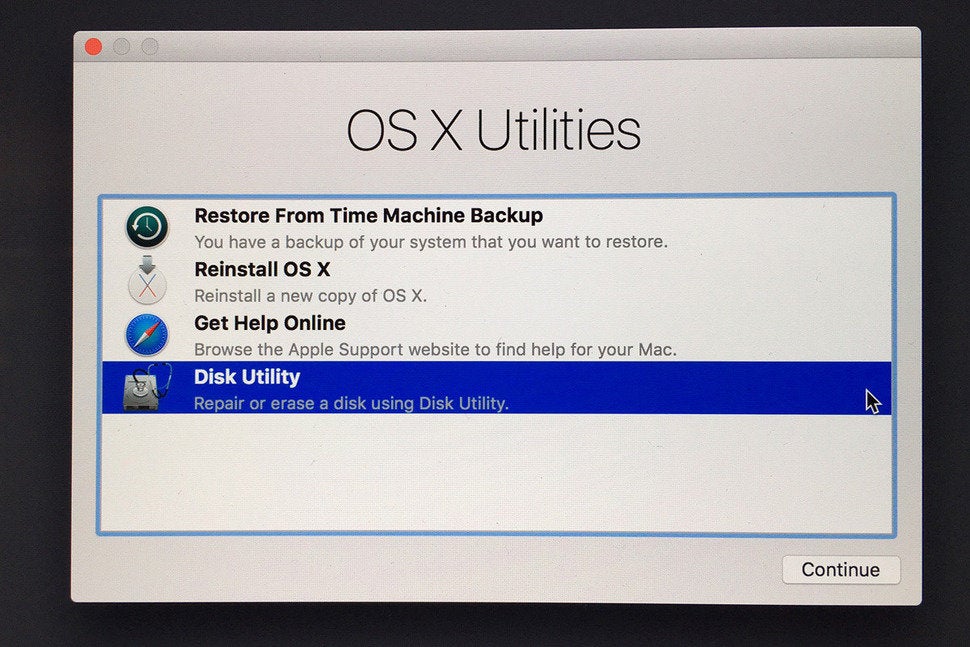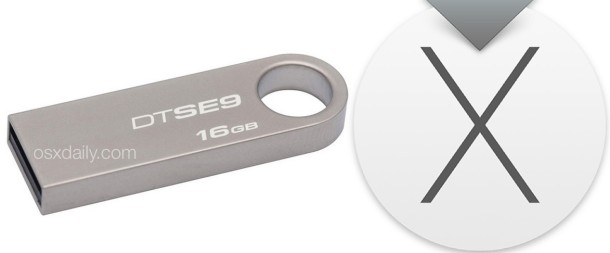Os X El Capitan Bootable Usb
If your Mac suddenly refuses to boot up properly, you might need a bootable macOS USB installer to make repairs. But how do you create such a disk if all you're left with is a Windows 10 computer? Fortunately, there's a great tool that you can use for free to create bootable macOS media on a USB drive in a Windows 10 environment. This article shows you how to download a macOS DMG file, format a USB drive using a GUID Partition Table, burn the DMG to the drive and boot your Mac from the USB. All the steps except the last one are done on a Windows 10 machine.
Create a bootable USB drive for macOS X versions including El Capitan, Yosemite, Mavericks, Sierra, High Sierra, Mojave, Catalina and Big Sur. Create Bootable USB for Mac OS X El Capitan with TransMac. A new pop up box will appear, click on the three-dots, and then select the macOS X El Capitan.DMG file from Windows. Then click on OK. Choose Mac OSX El Capitan DMG file. Since the file is huge so it will take quite time to complete. It may take about 20 to 30 mins or more. I am trying to create a fresh install of OS X on a MacBook Pro (2009 - A1278 - El Capitan 10.11.6 - 2.26Ghz - 8GB DDR3 - 240SSD) so I can sell it. My problem is, I have created a USB bootable drive with Yosemite, which does not show in the Startup Manager. I have formatted the USB to Mac OS (Extended Journal) and made 1 Partition in the GUID. Bootable Usb Os X El Capitan Civil Engineering Tamil Medium Books. This is Ultimate tutorial for installing Mac OSX up to EL Capitan 10.11. For an OS X El Capitan installation, the file gets saved as a disk image named 'InstallMacOSX.dmg'. To install, open the disk image and run the installer named 'InstallMacOSX.pkg'.
Part 1: Download macOS or Mac OS X DMG File
The first step is to get the DMG disk image file for the version of macOS that you want. You can get a copy of the latest macOS version from Apple download portal or App Store here. There are also several other direct download sites that offer various versions of Mac OS X in DMG format rather than the standard APP format that runs on Mac. Since you're working in a Windows environment, you need the DMG rather than the APP file.
macOS DMG Download Link:
Part 2: Easily Create a Bootable macOS USB from Windows 10/8/7 PC
You have now formatted the partition of USB drive. It's time to download UUByte DMG Editor for Windows. Although this is a premium software, you can use the initial free trial period to create a bootable macOS USB on Windows 10. After installing the application, follow the sequence of steps shown below:
Updates (Dec 8, 2020): The latest version of UUByte DMG Editor is able to format the USB automatically.
Step 1: Right-click the software icon on desktop and select 'Run as Administrator' from the contextual menu. Choose 'Run' when prompted.

Step 2: Insert your formatted USB drive, and click 'Burn' tab on the main screen.
Step 3: Click 'Browse' button to import macOS dmg file into the program. And select the USB drive name from the second row. You can also set a volume labe for that USB drive.

Step 4: Click 'Burn' button at the bottom to start the process. You will see a progress bar and wait around 10 minutes to get it done.
Step 5: Once the progress bar is at 100%, a bootable macOS USB is ready. After that, you can use that USB drive for installing macOS.
This is one of the easiest way to create a bootable macOS USB on a Windows PC. The steps are simple and instructions are pretty clear.
Part 3: Format USB Drive to GPT If Failed
If the USB drive created in above step was not seen as a bootable device on your Mac, then you need to take an addtional step before burning. That's formatting the USB to GPT.
Mostly, the USB drive was formmated to FAT32 in default when being shipped out from the factory. However, FAT32 can be only used for installing OS with legacy BISO, which doesn't work for macOS. So the next step is to format your USB drive in the GPT partition style in order to burn installation files to the desired USB drive. You can do this in Command Prompt as admin. In elevated Command Prompt (Ctrl+Shift+Enter), input the following series of commands followed by Enter after each line:
Diskpart
List disk
Select Disk X (X stands for the USB drive name that appears after the previous command)
Clean
Convert GPT
Create partition primary
Part 4: Boot Mac from macOS USB Drive for Installation
Now remove the USB drive and insert it into the Mac computer. To boot from the disk, you need to hold down the option key when you hear the boot chime. This will take you to the Startup Disk Manager, where you should be able to see the USB drive. It might have a different name, but as long as it is bootable, you'll be able to see it there. Once you select it, the computer will boot from the disk and the macOS installation will begin.
Troubleshooting
Flashing Error: You might receive a flashing error message at the end of burning process. Please don'y worry and ignore this error. The USB becomes a bootable disk and you can use it to install macOS even this error pops up.
About Official EI Capitan DMG: There has a serious bug in the official release of OS X El Capitan, which contains .pkg installer only. The burning process will fail for sure. Please use this modified EI Capitan DMG file instead, which was approved a good option.
Registration Failed: Please make sure the computer is connected to Internet and no proxy or VPB is running during registration. If the problem still exists, please send an email to support team asking for a new code.
Conclusion

The whole process might look a bit complicated if this is your first time, but just follow the instructions in this article and you should be fine. That being said, you need to be careful when downloading the DMG file and formatting your USB drive. If you don't do these two steps correctly, the output drive from the UUByte DMG Editor software won't be bootable, which means you can't install macOS from that USB drive, and you may need to do the whole thing over again.
Whenever new OS X release comes to Mac users, it is important to create a Bootable USB as a backup option to clean install. Most of the time upgrade works well, but there are chances your battery performance go poor or OS X corrupt due to apps installed on the computer. That is when we need to perform Clean Installation of OS X as the final troubleshooting method.
Download OS X El Capitan only from Mac App Store which is available right now. Simply launch App Store on your mac computer and you will see El Capitan already featured with free download button.

OS X El Capitan featured with tons of new features and improvements to existing features. I have installed it on my iMac and Macbook Pro, and so far it is great. As i mostly use my macbook pro at desk, didn’t notice any battery performance problems. There are reports from Macbook Pro and Macbook Air users who have upgraded to El Capitan regarding battery issues.
Another important step to do after downloading the OS X El Capitan is taking backup of the installation file. By default the location of the file set to /Applications folder and the file automatically deleted after completing the OS X upgrade. So it is very important for you to take a backup of the file named “Install OS X El Capitan” from “Applications” folder to create bootable USB or use it later.
Go to Applications folder by opening Finder once the download completed and OS X El Capitan installation wizard pop up comes on your desktop screen.
At this point, copy the file “Install OS X El Capitan” and paste it any folder on your hard disk drive. Now you have the copy of latest OS X released by Apple and you can use it whenever you want and share it with your friends saving 6 gigabytes of bandwidth for them.
Create OS X El Capitan Bootable USB
We are now ready to create the bootable usb disk drive of OS X El Capitan. All you have do is, follow the couple of steps suggested here and you are ready to install El Capitan on any mac computers.
Step 1: Connect USB Disk Drive to your mac computer and Open “Disk Utility” by typing it on Spotlight (CMD + Space Bar) or by going to “Applications – Utilities – Disk Utility”.
Step 2: Select the USB Drive from the list and on the Right side, select “Erase” tab and rename the USB drive as “Untitled” and click on Erase to perform the operation.
Step 3: Now the USB Drive is ready for OS X El Capitan installation. Make sure the copy of “Install OS X El Capitan” is there on /Applications folder.
Step 4: Launch “Terminal” and copy, paste the following command in Terminal then press Enter.
Bootable Usb Mac Os X El Capitan
Step 5: Terminal will prompt for Root password, enter the root password and press enter. USB Disk formatting will start now followed by the copying of files required to create bootable os x el capitan usb drive.
It will take 5 to 10 minutes maximum and the Bootable USB Disk of OS X El Capitan will be ready for use.
Os X El Capitan Update
If you don’t want to follow these steps and looking for an app to automate all these tasks and get the USB ready with OS X El Capitan then consider using, DiskMaker X which is compatible with OS X El Capitan as well. Download DiskMaker X 5 which comes around 7 MB and create the bootable usb drive easily.
Os X El Capitan 10.11.6
Thanks for reading, and feel free comment below if you have any queries. Have a wonderful day, and don’t forget to share this post with your friends and followers across Twitter, Facebook and Google+.